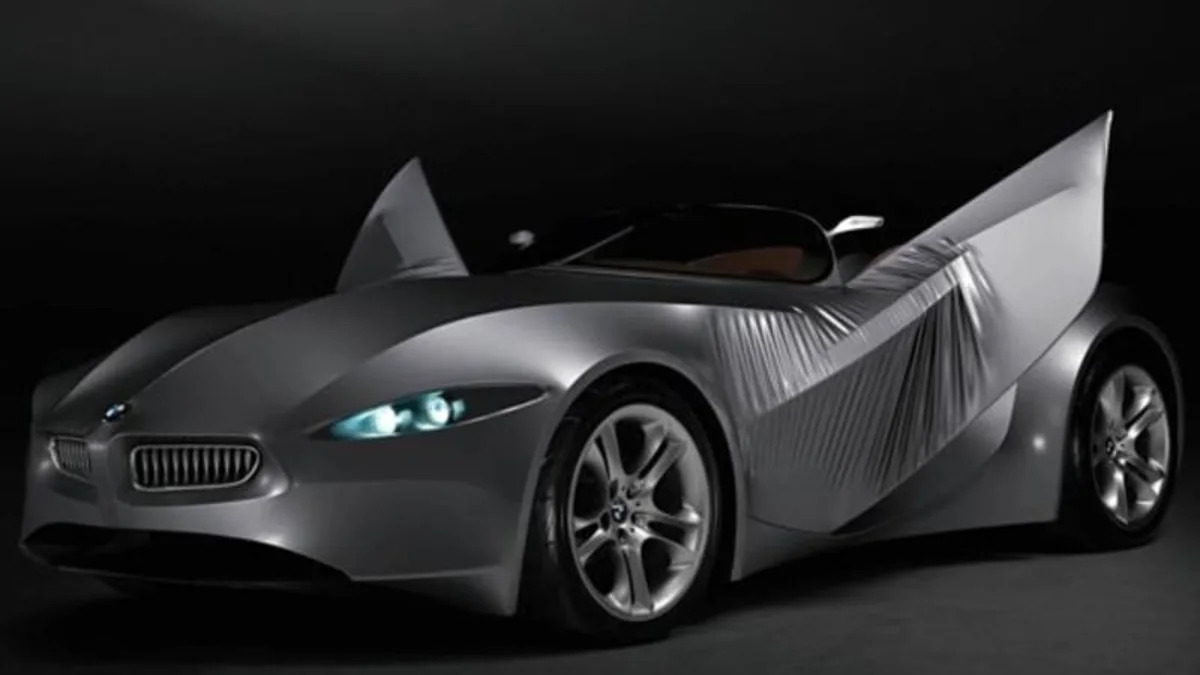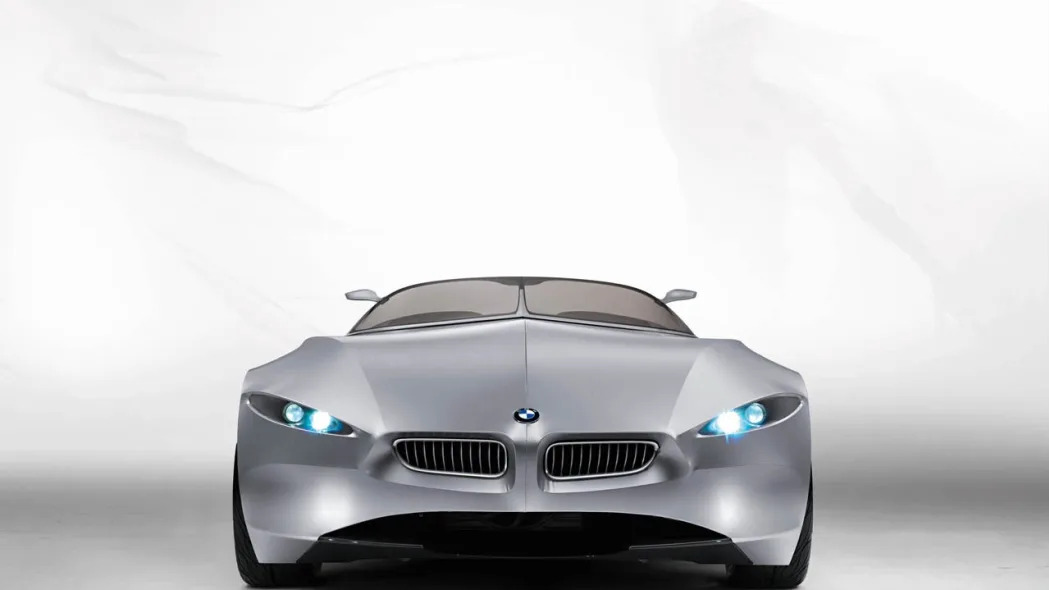BMW GINA Light Visionary Model – Click above for high-res image gallery
Remember the BMW GINA Light Visionary Model? BMW began work on that concept in 2002 but kept it under wraps, as it were, until 2008. One of the people who worked on that truly mind-twisting vehicle was Chris Bangle, who spoke in Iceland at the 2010 Driving Sustainability event about emotional mobility. If anyone here is talking about how to truly transform mobility, he's the guy. It'll be tough to sum up Bangle's presentation in mere words, but here goes.
Take the following series of facts: people in the developing world want cars. If the idea of a car remains the same in 50 years as it is today, there simply won't be enough room – to say nothing of the resources or energy required to build and move them – for all of them. Take a Mercedes S-class as the standard-sized vehicle. It's about two meters wide and five meters long, so each car is 10 square meters. If everyone in India drove one, it would take up a quarter of the country. That's not sustainable.
OK, set that aside and follow us after the jump to get into how the very idea of a car might be changing in the coming years, and to see how alternative powertrains will play a role.
 Bangle no longer works for BMW, but he still cares about cars and – perhaps more importantly – how people care about their cars. Right now, and for the past few decades, we have been treating cars different than we treat other forms of transportation. Bangle calls this emotional mobility. We treat a lot of transportation methods the way we treat elevators: get on, travel, get off. Who cares what the outside looks like? Planes, buses, subways, cabs – and, yes, elevators – don't have an emotional sway over us.
Bangle no longer works for BMW, but he still cares about cars and – perhaps more importantly – how people care about their cars. Right now, and for the past few decades, we have been treating cars different than we treat other forms of transportation. Bangle calls this emotional mobility. We treat a lot of transportation methods the way we treat elevators: get on, travel, get off. Who cares what the outside looks like? Planes, buses, subways, cabs – and, yes, elevators – don't have an emotional sway over us.
Cars, though, are often treated like an avatar, and the means the car's design has meaning to us. Designers put a lot of thought into the look and feel of a car but they're limited with what they can do by a lot of rules and regulations. Safety and customer demands top the list, but the standard internal combustion powertrain also limits what designers can come up with.
So, we asked Bangle, don't electric powertrains free up the designers because there is more flexibility in how to package the powertrain? With in-wheel motors and the elimination of a huge ICE – replaced by smaller electric motors and battery packs that can be shaped as needed – we thought the answer would be an obvious "yes." We were wrong.
The issue isn't really the powertrain, but getting away from the car as a symbol of the self. The generation coming up right now, he said, is making this shift and doesn't really care about cars that much. For them, cars are about cheapness. "Hope you like silver," he said, "because that's all you're going to get." This is the generation that grew up on sharing music – and they're ready to adopt car sharing (and much more) as well.
Recently, Bangle did a study with young people called "Pink" (more info in the video below) where they told him a few things about their ideas for products in 2010 and beyond. There were three main lessons: stuff should have an identity, it should only be there when you need it and it should be for sharing and bringing people together. How does a huge lump of privately owned steel with four wheels accomplish these goals? It doesn't.
This is why just replacing the gas engine with an electric motor doesn't go far enough. The meaning of a Tesla Roadster is "sports car," not something totally new that redefines what cars – electric cars – mean. For designers to really be free to use alternative powertrains in sustainable ways, the meaning of an electric car needs to changed.
Bangle said the GINA gives us a bit of a window into what that might look like. To recap, the GINA is a sort of cloth-covered concept car. The flexible covering gives a completely new meaning to what the outside of a car can do. The headlights can wink, for crying out loud. And a cloth covering can give more meaning to an electric powertrain. Old gearheads pop the head to show off their V8. Open up an electric car and what do you have? A boring electric motor. But what is your electric car's "hood" opened in an unusual way? Then, maybe, you'd identify with your car not just for the powertrain, but maybe the simple act of opening up the hood itself.
The GINA does have environmental benefits – a square meter of the GINA skin has 1/10th the ecologically footprint of a square meter painted steel – but it also appealed to the YouTube generation (it was the most-watched video for a while when the GINA was unveiled in 2008), which might be the more important aspect. The eco-side of the GINA is good, but people care about more than fuel economy. Bangle pointed out that if fuel economy was all that mattered, someone would have made and sold a golf ball car, as seen on Mythbusters. Bangle figures no one did because there was no emotion there. With the GINA – and the future vehicles that a concept like this could morph into – we could have both.
This brings us to Bangle's main point: a completely new way we might one day define a car. Image, for example, a flexible exterior, flexible vehicle components (swappable batteries, exchangeable number of wheels/seats/windows, etc.) and a avatar that is attached to a person and not a thing (can you say personality displayed digitally on whatever you're driving?). This way, people could assemble/rent/share a small pod car when they need to go to work but turn that into a four-seater when it's time to pick up friends to go to a party. The batteries/wheels/motors/etc. could then be used by someone else when they're not needed. Where would they sit while no one uses them? How about where gas stations are today, since these places are already in good locations. If this all comes to pass, instead of needing a place to park your S-Class over 25 percent of India, you'd just need a lot of small places to supply the components. This is much more doable, and sustainable.
Okay, this is all totally futuristic, and the technological challenges are
You can watch videos of the Gina concept and the Pink study below.
The video meant to be presented here is no longer available. Sorry for the inconvenience.
The video meant to be presented here is no longer available. Sorry for the inconvenience.



Sign in to post
Please sign in to leave a comment.
Continue